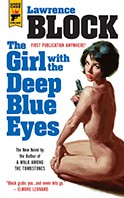
In some of the installments you’ll find lower down in this thread, I mentioned both the internal and the external unintended-consequences of the shift from paper to electronic reading.
- Internal: at least for me, information simply registers differently, and more deeply, from a traditional book or magazine page.
- External: reading from a printed source emits social cues about what you’re doing, and the presence of print around a house affects the environment in which children grow up.
Now readers on related aspects of this shift. First, from a person who has worked for many years as a teacher, in the United States and overseas:
The idea of "concept of book" is taught in most good Ed. School classes about reading. If you don't know to read from right to left, top to bottom, and whether to start front or back, you can't work the damn thing. You and I got the training from parental exposure. There are many children who do not have "reading parents" to stack their environment with cues.
A child seeing Mom work a Kindle does not get the same cues as when Mom is reading a book or magazine.
Similarly:
Growing up, my parents had National Geographic, Smithsonian, Newsweek, among others and I would pick them up when I got bored. Other than a couple of home improvement magazines, I do not subscribe to any today. I feel like I am cheating my children of any experience.
And from this same reader, not about the effect on children but on the other social cues:
You quote a reader who would “ . . . leave [The Atlantic] around the house so when people come by they will think I am smarter than I really am."
I subscribed to The Atlantic and The New Republic in law school and would carry them with me to class and read during breaks for this exact reason.
And about reading newspapers in hard copy: You cannot beat reading the newspaper first thing in the morning, lay out each page, drink your coffee and read. I go Sports, Front Page, Local, Business and Life/Entertainment.
I am a fast reader and read close to 90% of the paper in 15 minutes. I cannot imagine reading this way online.
From a reader in Japan, on this final point on the visual/intellectual ergonomics of reading a physical newspaper:
I enjoy reading what an editor has selected as news worthy, another way of saying that what I read in a paper are often things that I would never click on at a news site, the physical click becomes a self selecting echo chamber of sorts.
I agree: on the one hand, any excursion into online media leads to clicks you hand’t expected. On the other hand, I find that looking at a physical paper — which I have begun making myself do again, because I’m convinced that the results are better — leads me to more unanticipated items of “actual news.”
***
Let’s get back to kids-and-reading. A mother of youngish children writes:
I still subscribe to newspapers, The Atlantic, and other magazines for me, but also for my own children. More than anything else, I want to turn my kids into readers.
When I was younger, the new issues of Time and US News & World Report would be on our coffee table every Monday night. My parents also subscribed to the local newspaper and the WSJ, so there was always something to read just lying around. It was just easier to read an article, than to pick up a book.
By having books, newspapers and magazine around my house, even though I also have them on my iPad and Kindle, and by having my kids see me read them, I’m hoping that by osmosis and by example, my children will pick them up as well.
They may see me on the iPad or even on the computer doing the same thing, but it’s easy to assume that I’m just catching up on Candy Crush or random websites. I hope that by reading the real thing, and having my kids see me read the real thing, they will learn to enjoy it as well. I think it’s working, but until I know for sure, I still enjoy reading news in its original format.
And back again to social cueing:
Your piece just now reminded me of a common reader's dilemma from the past. If I was reading something highbrow, academic or otherwise socially impressive, part of the joy was to read it in public - on the train, in a coffee shop etc - letting people know what an intellectual force of nature I was.
On the other hand, when I was reading something lowbrow, dumb, hyper-violent or trashy, I would often leave the book at home even though I wanted to keep reading it, because people would decide that it said something about me I didn't want them to believe/know...

Relevant to the reader’s first paragraph: when I’ve been traveling in foreign countries where I can read, or sort of read, the language, I have been similarly vain about carrying newspapers in the local language, as a “I’m not a complete tourist!” signal. Relevant to the second paragraph: as noted before, I love books from the superb Hard Case crime series. The Hard Case trademark is issuing its books in retro-1950s lurid covers, as you see at right. While I love the panache of the covers sometimes I feel that I need to cover them up. What other people subway or airplane should think is, of course, “who is that cool guy reading a retro-50s series with its campy covers?” What I’m afraid they’ll think is, “Who is that creep?”
***
Finally for now, back to the visual-memory difference between reading in a physical book, where you always know how far along you are from beginning to end, and where a given passage appears on the page. After I mentioned that these cues were important to me, a reader responds:
Hallelujah! How is it the design fanaticism of Apple still hasn't solved this problem on the iBooks app?
The position on the page still holds (mostly, though I believe I've seen times when page layout changes without changing font or size), but the inability to know where you are in a book is really annoying. Sure, you can look down at the page number, but that's nothing like the intuitive feel of a book where you just see that you're about 2/3 of the way through. Same holds for every other ebook reader I've seen.
More to come; thanks to all.